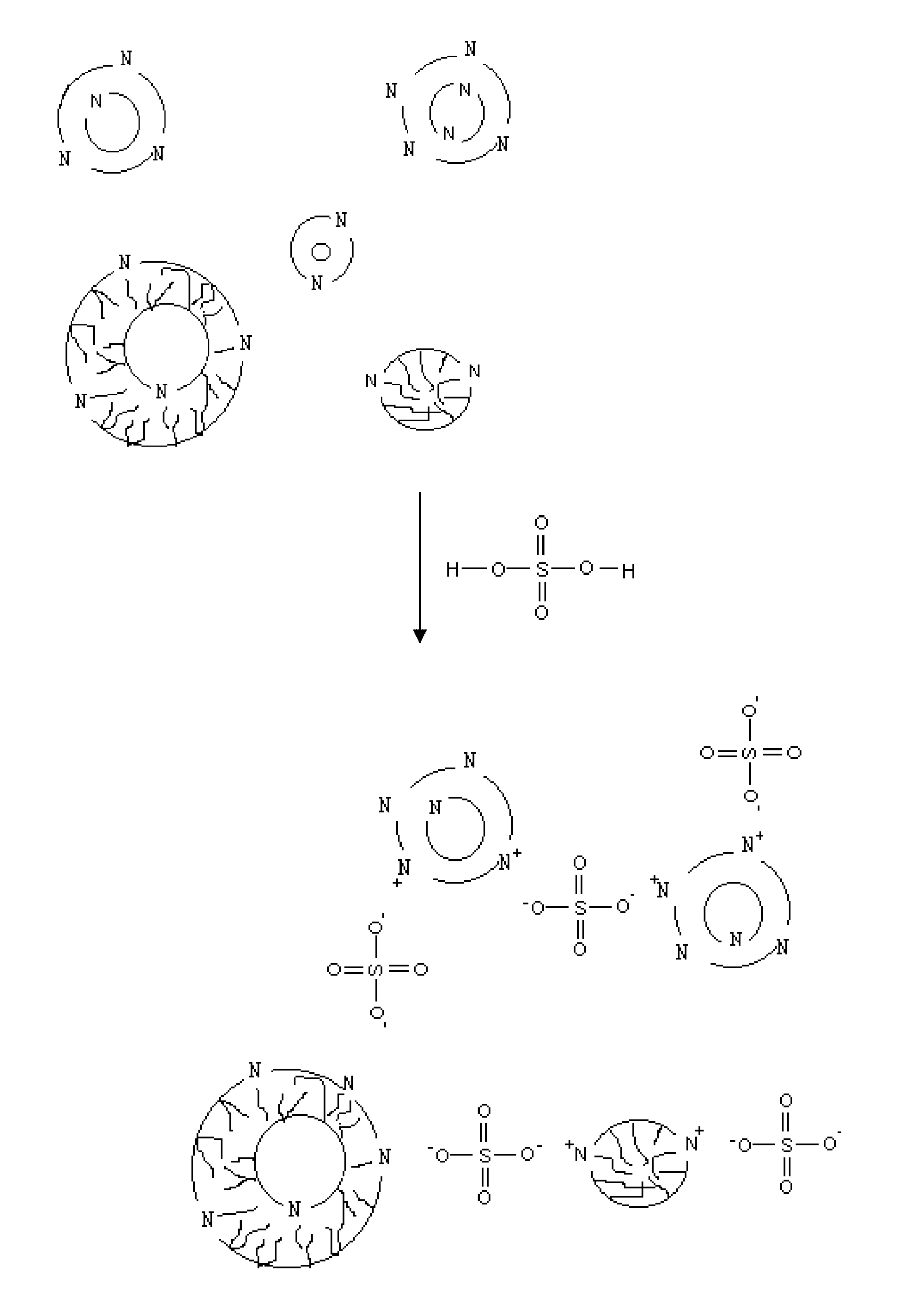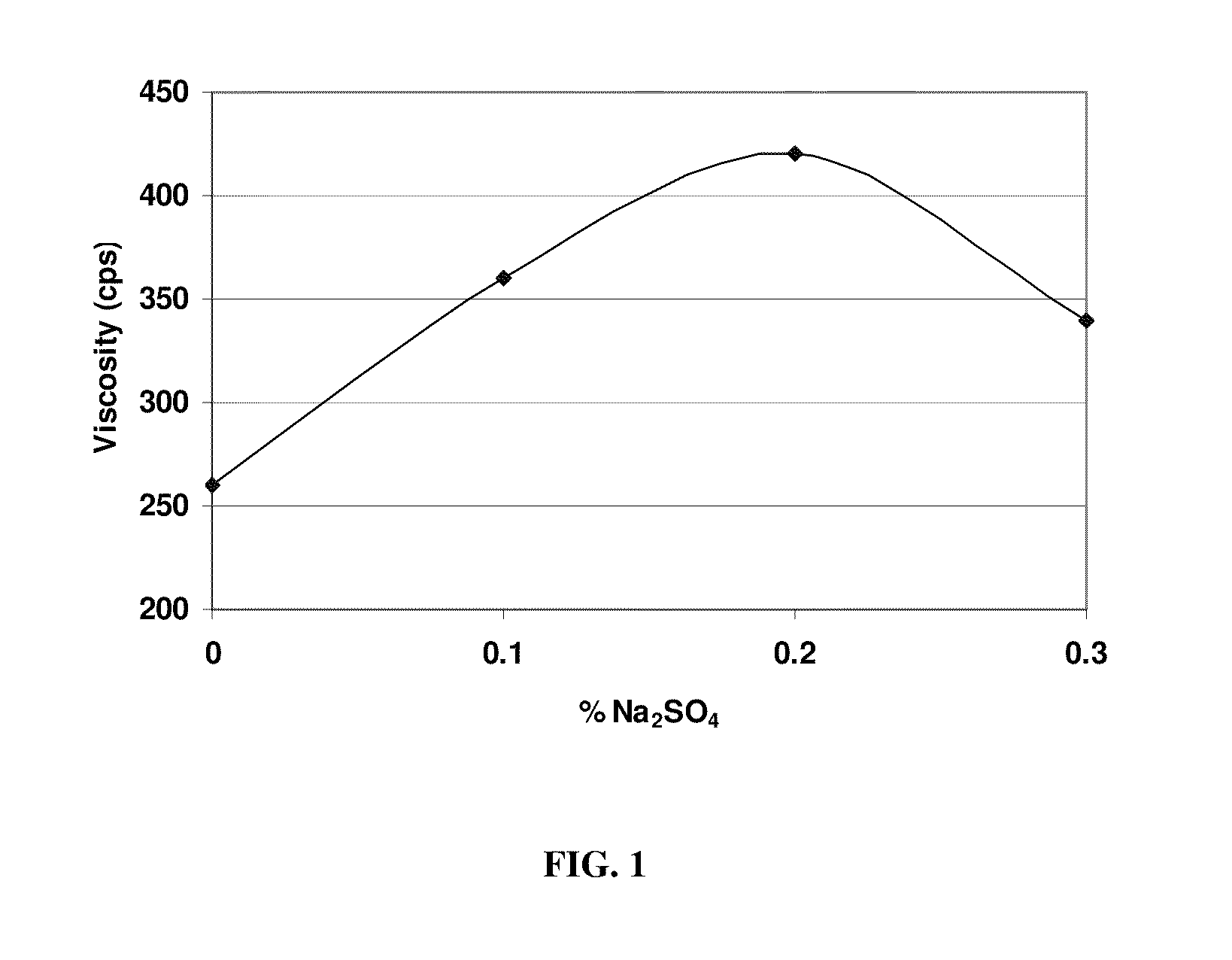Low Solids, High Viscosity Fabric Softener Compositions and Process for Making the Same
a fabric softener and composition technology, applied in the field of low solids and high viscosity fabric softener compositions, can solve the problems of increasing the cost of the resultant fabric softener composition, and generating a drop in viscosity of conventional polymeric thickening agents, so as to improve softening, stability and viscosity performance properties, and cost-effective manufacturing
- Summary
- Abstract
- Description
- Claims
- Application Information
AI Technical Summary
Benefits of technology
Problems solved by technology
Method used
Image
Examples
example 1
Making a First Low Active, High Viscosity Composition Comprising STEPANTEX® VT-90 ester Quat and SAPDMA
[0130]Process Option 1 as described above is used in this example to make a fabric softener composition using STEPANTEX® VT-90 ester quat and SAPDMA as the fabric softening actives.
[0131]Water (898.8 g) is heated to from about 63° C. to about 65° C. SAPDMA (10 g) are added to the heated water and agitated to disperse. STEPANTEX® VT-90 ester quat (44.4 g) is then added and agitated for about 3-10 minutes. The mixture is quickly cooled with iced-water to below the re-crystallization temperature of the mixture of STEPANTEX® VT-90 ester quat and SAPDMA at about 27° C. The pH of the mixture is adjusted to about 2.6 with 1N H2SO4 solution (about 26.8 g). 20% CaCl2 solution (about 20 g) is then added with slow mixing. The agitation stops.
[0132]The fabric softener composition produced is tested for its properties, and the results are presented in Table 1 as Example 1.
example 2
Making a Second Low Active, High Viscosity Composition Comprising STEPANTEX® VT-90 ester Quat and SAPDMA
[0133]Process Option 2 as described above is used in this example to make a fabric softener composition using STEPANTEX® VT-90 ester quat and SAPDMA as the fabric softening actives.
[0134]STEPANTEX® VT-90 ester quat (200 g) is premixed with SAPDMA (20 g) at about 9:1 active ratio in a covered glass container at about 70° C. for approximately about 10 minutes, until a homogenous blend is obtained. Deionized (DI) water (876.1 g) is then loaded into a glass vessel and heated to about 55° C. The molten pre-mix of STEPANTEX® VT-90 ester quat / SAPDMA (about 76.9 g) is dispersed in the heated DI water at about 55° C. and mixed well for about 2 to about 3 minutes at about 200 rpm using a U shape mixer. The mixture is cooled down with iced-water to about 27° C., and the mixing speed is reduced to about 160 rpm. A 1N H2SO4 solution (about 18 g) is slowly added to the mixture at about 27° C. w...
example 3
Making a Third Low Active, High Viscosity Composition Comprising Hard Tallow triglyceride ester Quat and SAPDMA
[0136]This example uses the Process Option 1 described above to produce a fabric softener composition using SAPDMA and hard tallow triglyceride (HTTG) ester quat as the fabric softening actives. SAPDMA (about 8 g) and stearyl alcohol (about 3 g) are added to water (about 926.1 g) at about 65° C. and mixed for approximately 3 minutes with low shear agitation. Pre-melted HTTG ester quat (about 25.9 g) is slowly added to the water with continuous mixing for about 5 minutes while maintaining the temperature at about 55° C. The dispersion is quickly cooled to about the phase transition (re-crystallization / solidification) temperature of the dispersed mixture of HTTG ester quat and SAPDMA at about 38° C. determined by using DSC.
[0137]The pH of the fabric softener dispersion is then adjusted to about 3.9 with a 1N sulfuric acid solution (about 22 g), under the phase transition temp...
PUM
| Property | Measurement | Unit |
|---|---|---|
| temperature | aaaaa | aaaaa |
| temperature | aaaaa | aaaaa |
| temperature | aaaaa | aaaaa |
Abstract
Description
Claims
Application Information
 Login to View More
Login to View More - R&D
- Intellectual Property
- Life Sciences
- Materials
- Tech Scout
- Unparalleled Data Quality
- Higher Quality Content
- 60% Fewer Hallucinations
Browse by: Latest US Patents, China's latest patents, Technical Efficacy Thesaurus, Application Domain, Technology Topic, Popular Technical Reports.
© 2025 PatSnap. All rights reserved.Legal|Privacy policy|Modern Slavery Act Transparency Statement|Sitemap|About US| Contact US: help@patsnap.com



